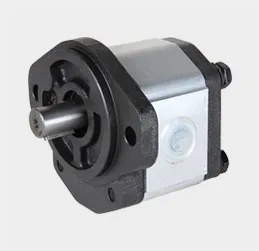stamping parts design
The Essentials of Stamping Parts Design
Stamping is a widely used manufacturing process in various industries, particularly in the automotive, aerospace, and electronics sectors. The design of stamped parts is critical to the overall efficiency and quality of the finished product. This article will explore the key considerations in stamping parts design, highlighting important factors that engineers and designers must take into account to ensure successful outcomes.
Understanding Stamping
Stamping is a process that involves the use of dies and a stamping press to convert flat metal sheets into specific shapes. It includes operations such as punching, blanking, bending, and embossing. Given its capability to produce high volumes of identical parts with precision, stamping is often preferred for mass production. However, the design phase is crucial to the effectiveness of the stamping process and the functionality of the final parts.
Key Design Considerations
1. Material Selection The choice of material is foundational in stamped parts design. Commonly used materials include steel, aluminum, and copper alloys. Each material has distinct properties, such as tensile strength, ductility, and corrosion resistance, which influence the design and manufacturing processes. Engineers must consider material thickness and grade to ensure that the final product meets strength and durability requirements.
2. Die Design The design of the die directly impacts the stamping process's efficiency and precision. A well-designed die should facilitate smooth material flow and minimize wear and tear. Designers must also consider the die's geometry, which can affect the ease of part removal from the die and may require additional secondary operations like deburring.
stamping parts design

3. Part Geometry Complex geometries can pose challenges during fabrication. Designers should aim for simplicity in part shapes whenever possible, as intricate designs might lead to higher production costs and potential issues with material flow during stamping. However, achieving the necessary functionality and performance specifications must also be balanced with design simplicity.
4. Tolerance Specifications Tolerances are critical in ensuring that stamped parts fit precisely in their intended assemblies. Designers should work closely with manufacturing engineers to establish realistic tolerances that can be achieved through the stamping process. Understanding the capabilities and limitations of the stamping equipment is essential in this regard.
5. Post-Processing Needs Post-processing activities, such as surface finishing or assembly, must be planned during the design phase. If the stamped part requires additional processing, it can influence the initial design, including how and where to provide access for tools or fixtures.
6. Production Volume The anticipated production volume can dictate many aspects of design. High-volume production may justify the upfront costs of tooling and die creation, while lower volumes might require more cost-effective solutions or alternative manufacturing methods. Designers need to align their designs with the forecasted production volumes to optimize overall costs.
7. Sustainability With a growing focus on sustainable manufacturing practices, designers must consider environmental impact. This includes optimizing material usage to reduce waste, selecting recyclable materials, and evaluating the energy consumption of the stamping process itself.
Conclusion
In conclusion, stamping parts design is a multifaceted discipline that combines engineering principles with practical manufacturing considerations. By focusing on material selection, die design, part geometry, tolerance specifications, post-processing needs, production volumes, and sustainability, engineers can create efficient, high-quality stamped parts. As industries continue to evolve, so too will the techniques and technologies associated with stamping, underscoring the importance of innovative design practices in this essential manufacturing process. Careful attention to design details can ultimately lead to significant improvements in production efficiency, cost savings, and product quality.
-
Precision Casting Prototypes and Engineering Inc – Innovating Global Manufacturing SolutionsNewsNov.24,2025
-
Precision Casting Facility: Advanced Manufacturing for Global Industries | Hairun SourcingNewsNov.23,2025
-
Leading Precision Casting Corporation: Quality Metal Components for Global IndustryNewsNov.23,2025
-
Precision Cast Rods: Definition, Applications & Future Trends in ManufacturingNewsNov.22,2025
-
Precision Cast Iron Surface Plate: The Backbone of Industrial Accuracy and QualityNewsNov.21,2025
-
Precision Aluminum Investment Casting: High-Accuracy Manufacturing for Modern IndustriesNewsNov.20,2025















